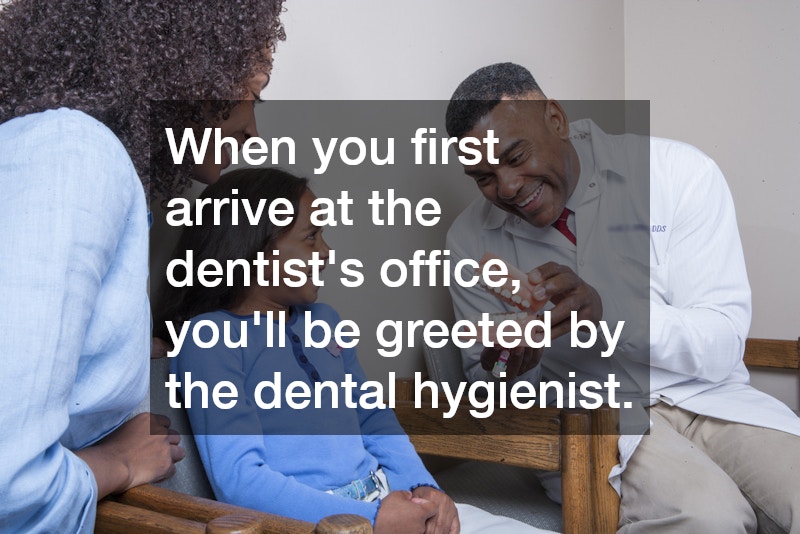Teeth cleaning is an essential part of maintaining oral health and preventing dental issues. Going to the dentist for a regular cleaning is a crucial step in a comprehensive dental care routine.
This article will walk you through what to expect during your teeth cleaning appointment, helping to alleviate any apprehension and ensuring a smooth experience.
The Initial Examination
When you first arrive at the dentist’s office, you’ll be greeted by the dental hygienist. They will begin with a preliminary examination of your mouth, checking for any signs of inflammation or other potential issues. This step is important as it allows the hygienist to determine which areas may need extra attention during the cleaning process.
The dental hygienist uses a small mirror to closely inspect your teeth and gums. This mirror provides a detailed view, helping the hygienist identify any plaque, tartar, or potential cavities that may need further inspection. It’s a quick and painless step that sets the stage for a thorough cleaning session.
If the hygienist identifies any significant concerns, they might call in the dentist for a closer look. This collaborative approach ensures any potential issues are addressed promptly. Early detection of such issues can significantly impact overall dental health.
Removing Plaque and Tartar
The next step in the teeth cleaning process is the removal of plaque and tartar. Using a special tool called a scaler, the hygienist will meticulously scrape off any buildup on your teeth. This process targets the areas between your teeth and around the gumline where plaque tends to accumulate.
Although it might sound uncomfortable, the removal of plaque and tartar is generally painless. Some patients might experience slight pressure as the scaler moves along the teeth. This crucial step is essential in preventing gum disease and maintaining healthy teeth.
It’s important to remember that regular teeth cleaning can prevent the excessive buildup of tartar. Once tartar forms, it can only be removed professionally during your dental appointment. Therefore, adhering to regular cleaning appointments is pivotal to oral health.
Professional Brushing with Gritty Toothpaste
After the plaque and tartar have been removed, the hygienist will brush your teeth using a high-powered electric brush. The toothpaste used is gritty, which provides a gentle scrubbing action to polish your teeth. This step leaves your teeth fresh and contributes to their long-term health.
While similar to your daily brushing routine, this professional version is more thorough. It is used sparingly in dental offices due to its slightly abrasive nature. Patients leave the dentist with smooth, polished teeth after this step.
Patients are often advised to choose toothpaste with a balanced abrasive action for their daily routine. This ensures effective cleaning without damaging the enamel. The choice of toothpaste is part of a holistic approach to maintaining oral hygiene between professional visits.
Expert Flossing
Flossing is the next part of the teeth cleaning process, and it is performed to reach any areas brushing might miss. The dental hygienist will expertly floss between each tooth and address any particular areas that might need extra attention. This professional flossing acts as a model for how patients should floss at home.
Learning the correct technique from professionals ensures you maintain optimal oral health between visits. Flossing removes any remaining debris and plaque from between your teeth. Regular flossing is crucial in the prevention of interproximal cavities and gum disease.
If flossing at home often causes gums to bleed, do not be alarmed. It can be a sign of gum inflammation, which professional cleaning helps reduce. Regular flossing can prevent this inflammation and keep your gums healthy.
Rinsing and Fluoride Treatment
At this stage, the hygienist will ask you to rinse your mouth thoroughly. This step removes any lingering specks of debris, leaving your mouth feeling fresh and clean. Rinsing is an essential part of concluding the physical cleaning process.
If warranted, the teeth cleaning finishes with a fluoride treatment aimed at protecting teeth against cavities. Fluoride acts as a protective barrier for your teeth, helping to resist decay. It can be delivered in various forms, including a flavored foam or gel applied directly onto the teeth.
The fluoride treatment is quick and enhances the overall benefit of the cleaning process. It provides long-lasting protection, strengthening your teeth until your next appointment. This preventive measure is particularly valuable in safeguarding against decay.
Concluding Your Appointment
Once the cleaning process is complete, your dental hygienist will often review your oral hygiene habits. They may offer personalized advice on brushing and flossing techniques to improve your at-home dental care. This guidance helps ensure the longevity of the cleaning benefits and overall oral health.
Your next visit will typically be scheduled in three to six months. Keeping regular appointments supports the constant monitoring of your dental health. Early detection of any potential issues allows for prompt treatment and better outcomes.
Leaving the dentist after a thorough cleaning often inspires confidence in your smile. Clean, polished teeth and refreshed gums contribute to both oral and overall health. Regular teeth cleaning, paired with good dental hygiene practices at home, is key to a lasting, healthy smile.

